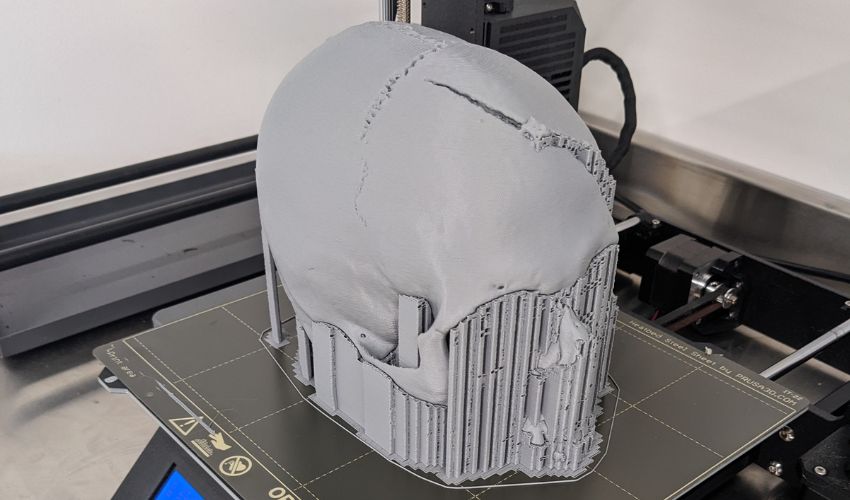3D Printed Skull Played “Pivotal” Role In Murder Conviction

Sherlock Holmes, Hercule Poirot, Columbo…3D printing? In a story that seems pulled straight from the latest detective novel, additive manufacturing has been used as a way to get a conviction for a murder in the United Kingdom. A 3D printed skull created as part of a joint partnership between the Hampshire and the Isle of Wight Constabulary was a key piece of evidence in finding four men guilty of his murder after an eight-week trail.
The case in question was that of Frazer Brabant who was found in his front garden with serious head injuries on October 31, 2019. Though he survived the initial attack, he suffered catastrophic brain damage and was in a coma until he succumbed to his injuries on January 21, 2020, at only 31 years old. His 3D printed skull was used to show the extent of his injuries as well as to help visualize the immense trauma to the head of the victim.

The victim Frazer Brabant (photo credits: Hampshire Constabulary)
The Murder Victim’s 3D Printed Skull
Dr. Morgan Lowther, Senior Scientific Official from the University of Portsmouth’s School of Mechanical and Design Engineering was behind the design and printing of the skull. He explained, “I attended the trial and saw the pathologist use the model to help guide the jury through the injuries sustained by the victim. He was able to demonstrate the order in which the blows were likely to have occurred, whether they’d come at the same angle, and whether they would have come from the same assailant or the same weapon. The jurors were allowed to handle the model and take it into the deliberation room. I think it was a valuable piece of evidence to help them understand the severity of the attack.”
Though the skull was 3D printed by experts at the University of Portsmouth, the Imaging Unit also had a crucial role to play. They used data from a CT scan mapping the injuries sustained by the victim to create a digital model. The hospital quality x-ray scans ensured that the anatomy of the skull could be recreated perfectly. Then, Dr. Lowther and his team were able to 3D print the skull using a Prusa i3 3D printer and PLA. They also added an internal scaffold to ensure that it would be stable enough to be handled and presented in court.
Though this may seem too strange for reality, 3D printing is often used for this type of modeling, especially in hospitals. Technologies like material jetting and FDM (as with in this particular case) are being used to help with surgical planning as well as medical training across the world. This latest example just shows the use of the technology even in the justice realm as it can allow juries to fully grasp the complicated medical information being shared.
Paul Taylor, the National Policing Chief Scientific Advisor, concluded:
“This innovative use of 3D technology to explain evidence to jurors shows how policing is embracing the rapid developments in scanning and computer modelling capabilities to bring justice to victims. We are rapidly moving to a place where presentations of expert evidence can and should be more than 2D pictures. I anticipate 3D printing will continue to help make complex evidence more accessible for jurors in years to come.”
You can read more in on the University of Portsmouth’s website HERE. What do you think of the use of a 3D printed skull to help get a murder convinction? How do you think the use of AM will evolve in police work? Let us know in a comment below or on our LinkedIn, Facebook, and Twitter pages! Don’t forget to sign up for our free weekly Newsletter here, the latest 3D printing news straight to your inbox! You can also find all our videos on our YouTube channel.







